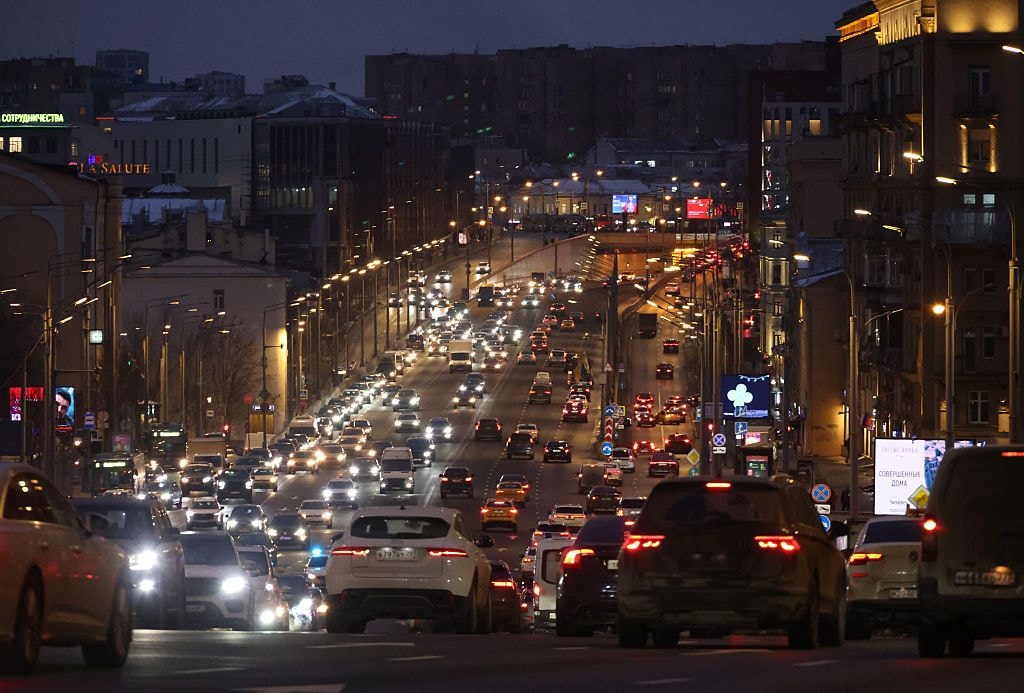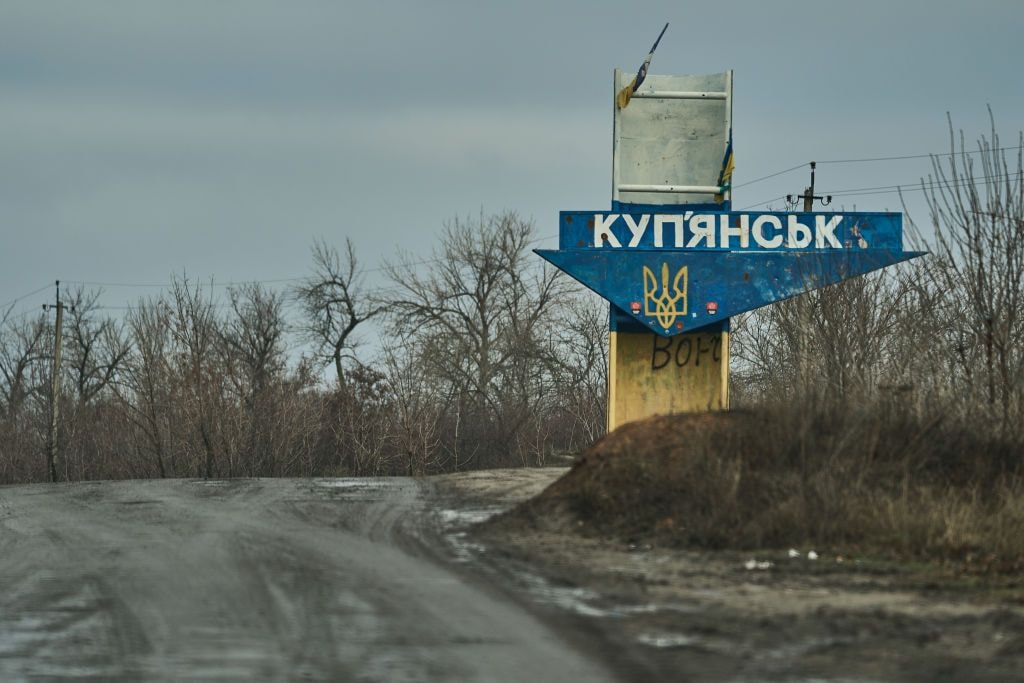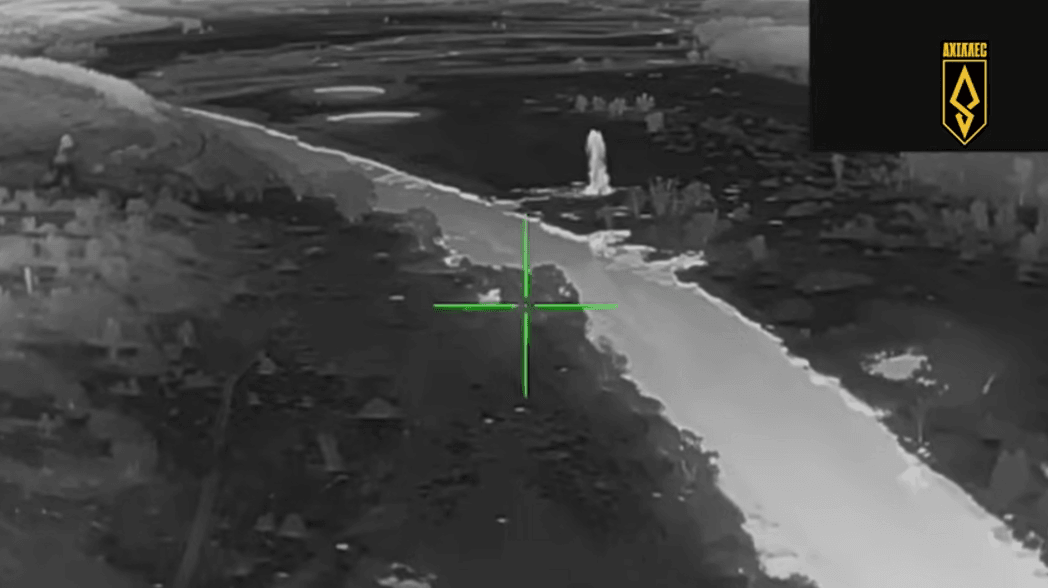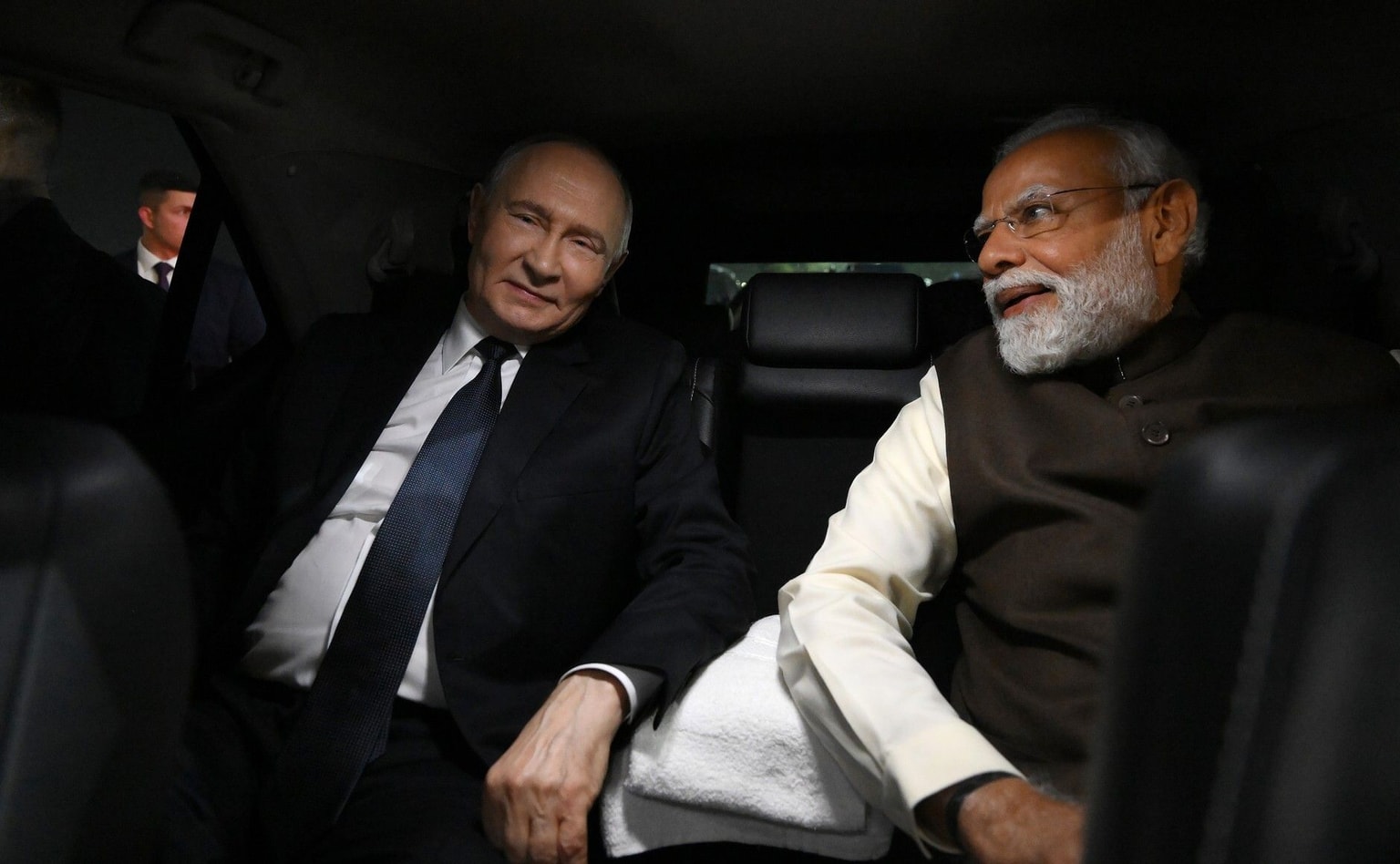‘It takes bravery to recognize mistakes:’ Ukrainian architects learn from Rotterdam to rebuild their own cities

When the Russian invasion of Ukraine forced urbanists Oleksandra Naryzhna and Anastasiia Palii to leave Kharkiv in March 2022, the Dutch city of Rotterdam was an obvious choice for a temporary home.
It’s a place that provides Ukrainian urbanists and architects with “a lot of opportunities,” Palii told the Kyiv Independent.
But for Naryzhna and Palii, who run the NGO Urban Reform, the choice to move to Rotterdam wasn’t about career opportunities. Rotterdam is a chance to learn from a city that approached its own reconstruction in a unique way, they said.
Almost wiped off the map at the start of the Second World War, Rotterdam’s post-war planners looked to what future inhabitants would need, rather than trying to reconstruct what was there before. The result is a city that looks unlike anywhere else in the Netherlands, home to world-renowned architects.
Ukrainian architects and urban planners are faced with a colossal task as a result of Russia’s war. The World Bank estimates the cost of reconstruction and recovery at around $411 billion.
Across Ukraine, over 25,000 kilometers of roads, 167,200 homes, and 3,500 schools have been damaged or destroyed, according to the Kyiv School of Economics.
The scale of what needs building isn’t the only issue for the current generation of Ukrainian architects — it’s what to rebuild, and how.
The team at Urban Reform is part of a community of architects who want to learn from Rotterdam to rebuild cities that better suit the needs of modern Ukrainians, rather than restoring Soviet-planned streets and buildings.
To achieve this, however, there needs to be a shift in the collective mindset, Palii said. “Ukraine is a super brave nation, but not in terms of architecture right now.”
“It takes bravery to recognize mistakes.”
Reinvention
Oleksandra Tkachenko, an urban planner who has worked in the Netherlands for eight years, agrees with this sentiment.
Even before the war, some of the worst-hit cities like Kherson and Mykolaiv had steadily shrinking populations. For people to come back, “we need to reinvent the whole city,” and figure out what we want to achieve through urban planning, Tkachenko told the Kyiv Independent.
Ukrainian professionals can learn a lot about designing strategies and visions for urban environments from Rotterdam, which Tkachenko describes as a “mecca” for architects.

This is because the process of reconstruction in Rotterdam has never truly been considered complete, Tkachenko explained, leading to ongoing experimentation and open debates about urban planning.
“Here it’s more about collaboration and discussion, not just between municipalities and architects, but also research institutes.”
But Ukrainians who want to approach urban planning in the same way are often faced with obstacles at city councils, where officials do not dare make changes, according to Naryzhna.
It is common to see a tension between a younger generation of urbanists with fresh ideas, and those responsible for decision-making, who are often older and received a rigid, Soviet-style education.
The Rotterdam city council, meanwhile, employs one hundred landscape architects alone, Naryzhna said. Projects involve architects working together with highly educated specialists from the municipality.

This means that “it’s a smooth, natural process” when something in the city’s design needs changing, whether it's the layout of a park or the location of a bike lane, Palii added. Here, “it’s not a drama.”
Rotterdam was originally rebuilt based on post-war ideas of what a modern city should be, with the framework of functional zoning that created separate areas for industry, leisure, and housing, similar to the layout of “sleeping districts” in Soviet cities, Palii explained.
The city has since reworked much of its urban planning to include mixed-use development and prioritize public transport and cycling above cars.
The environment now fits a “human scale,” said Naryzhna. What was rebuilt in the post-war period as a car-centric city now has 600 kilometers of bike paths.
Cycling infrastructure “is always a big deal for Ukrainian cities to implement,” she said, having designed a system of cycling lanes in Kharkiv that was never fully realized.
The issue is not the money, Palii added, but about feeling “freedom and bravery to make some changes.”
The next generation
The case of Rotterdam shows that rebuilding isn’t just something that happens in one year, or ten, but is a constant process, Tkachenko said. The same will be the case in Ukraine, she believes.
For young Ukrainian architects, “their whole life will be dedicated to reconstruction.”
She set up the capacity-building initiative Ukraine–Netherlands Urban Network (UNUN) in Spring 2022 after realizing she could use her skills as a networker to help.
Through UNUN, Dutch architects can donate their time to Ukrainian architects, by giving lectures, opening up their studios, or organizing workshops.
The aim is to help Ukrainian professionals develop ideas, rather than have foreigners impose their own plans.
Oksana Savchuk, a Rotterdam-based community organizer, also recognized that the youngest Ukrainians will be in charge of shaping what their country will look like.
Together with Urban Reform, Savchuk’s Studio Kitsunya developed an urbanism course for displaced Ukrainian teenagers in the city in 2023. Het Nieuwe Instituut, Rotterdam’s design museum, joined as a partner.
The aHOUSEforHOME project, which was supported by the Dutch Creative Industries Fund, gave these teenagers a sense of agency over their environment, while many of them were living in basic refugee shelters.
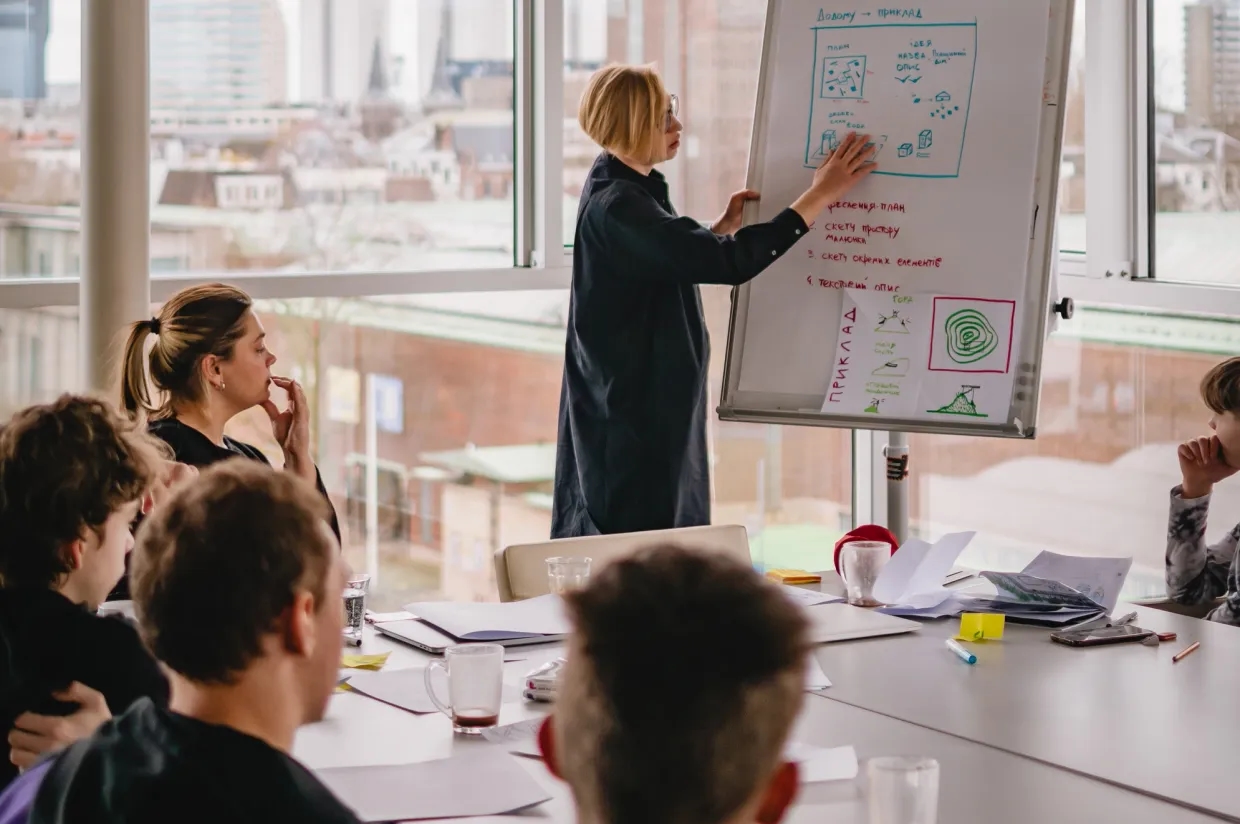
“We wanted this generation to understand that their environment is made by someone, and they have the power to change it in the future,” she said.
The course shifted their mentality and they started to see themselves as “creators and not just consumers, of their life, their physical environment, and their country,” said Savchuk.
The course didn’t just teach them to copy and paste what Rotterdam has done. They also reflected on what they missed from home. One aspect was a space to meet and do exercise, which is prioritized in many Ukrainian cities, but they felt was lacking in Rotterdam.
It’s important to avoid the attitude that Western Europe “knows better,” Savchuk said.
Discussion and dialogue
When Tkachenko is organizing events, she always ensures there is at least one Ukrainian and one Dutch speaker. Such events should be a dialogue, not a lecture, she emphasized.
Ukrainians can actually learn a lot from what Rotterdam got wrong about post-war planning, according to Mike Emmerik, director of the urbanism education platform the Independent School for the City, a partner of UNUN.
One example is that the immediate post-war planning had an approach that was extremely top-down. A big mistake was that the local population “was not involved so much at all,” he told the Kyiv Independent.
The role of the architecture community in Rotterdam isn’t to teach Ukrainians how to do their job, but to “help them think along” about what kind of skills, knowledge, and experience they might need, Ermmerik believes.
It’s also important to recognize that Ukraine is a diverse and decentralized country, and some municipalities are more open-minded than others, Palii said.
Before the full-scale invasion, “we had a project with the mayor of Melitopol (in Zaporizhzhia Oblast, currently under Russian occupation), who had big plans for the city.
“His team was very powerful,” and thought outside the box. It’s an example of a growing trend of local officials who are “very open,” regardless of their age, Naryzhna added.
Tkachenko sees evidence of this as well. Part of her work through UNUN is organizing tours around Rotterdam for Ukrainian mayors so they can discuss ideas with their teams.
She also believes it is important to teach those in Europe about the price being paid by ordinary Ukrainians so that discussions about how to rebuild can take place.
“Every time I give a lecture in the Netherlands, I start the presentation by mentioning the architects who joined the army, some of whom have been killed.”
“Only because of them, can we think about reconstruction.”
______________________________________________________
Note from the author:
Hi, this is Elsa Court, the author of this article.
Thank you for reading my story. While talking to Ukrainian architects about their reconstruction plans, I was struck by their determination to rebuild something better than what was there before. This perseverance and ambition to fight for a better country is something that I see reflected across Ukrainian society, even under daily Russian attacks.
To support our reporting on Ukraine's fight for its future, please consider becoming our supporter.



